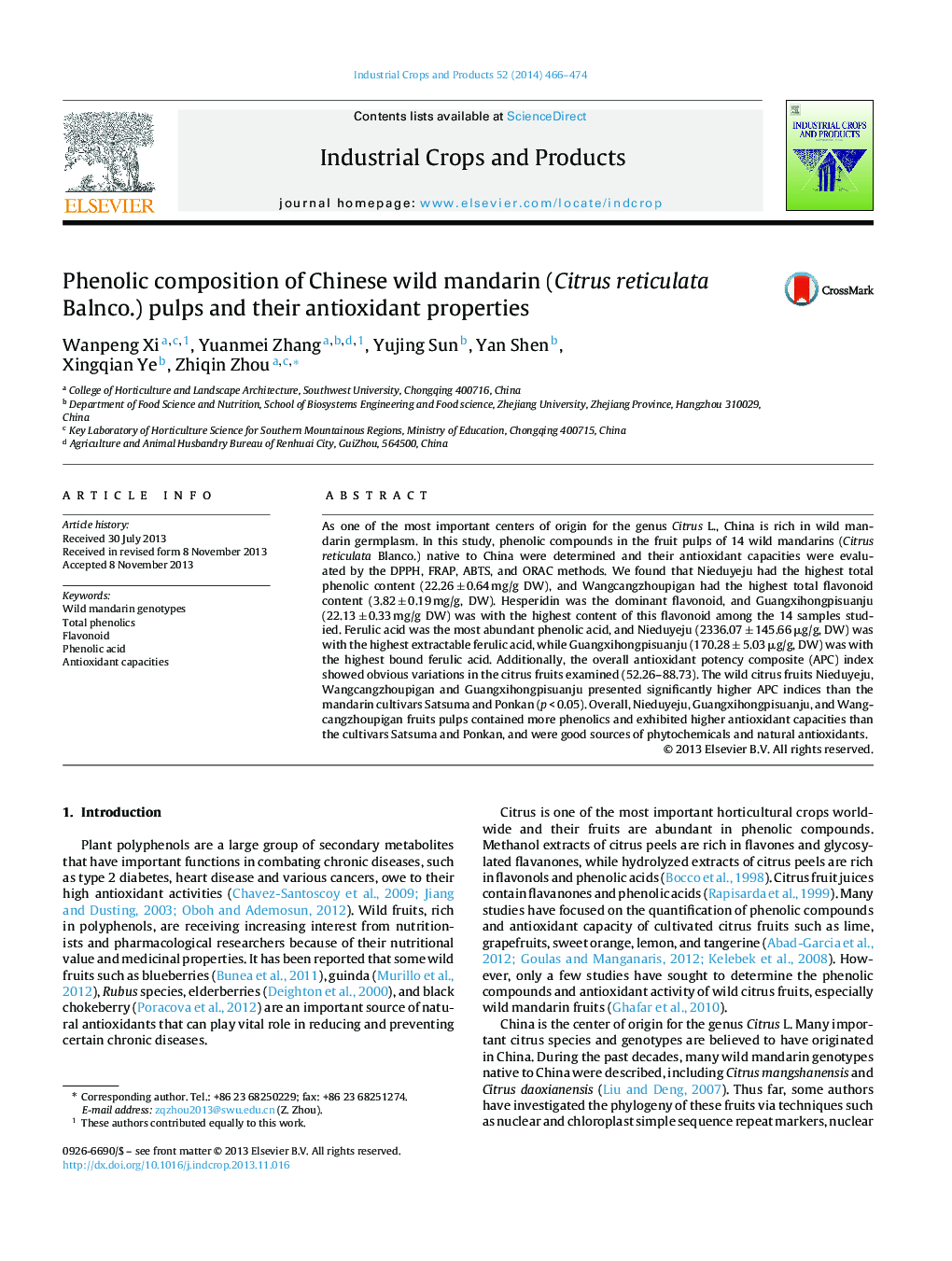| Article ID | Journal | Published Year | Pages | File Type |
|---|---|---|---|---|
| 4513425 | Industrial Crops and Products | 2014 | 9 Pages |
•China is rich in wild mandarin germplasms which were underutilized.•The phenolic and antioxidant activity of main Chinese wild mandarin were reported.•Some wild genotypes were rich in phenolics and exhibited high antioxidant capacity.•Remarkable variation was observed in phenolics contents and antioxidant capacity.
As one of the most important centers of origin for the genus Citrus L., China is rich in wild mandarin germplasm. In this study, phenolic compounds in the fruit pulps of 14 wild mandarins (Citrus reticulata Blanco.) native to China were determined and their antioxidant capacities were evaluated by the DPPH, FRAP, ABTS, and ORAC methods. We found that Nieduyeju had the highest total phenolic content (22.26 ± 0.64 mg/g DW), and Wangcangzhoupigan had the highest total flavonoid content (3.82 ± 0.19 mg/g, DW). Hesperidin was the dominant flavonoid, and Guangxihongpisuanju (22.13 ± 0.33 mg/g DW) was with the highest content of this flavonoid among the 14 samples studied. Ferulic acid was the most abundant phenolic acid, and Nieduyeju (2336.07 ± 145.66 μg/g, DW) was with the highest extractable ferulic acid, while Guangxihongpisuanju (170.28 ± 5.03 μg/g, DW) was with the highest bound ferulic acid. Additionally, the overall antioxidant potency composite (APC) index showed obvious variations in the citrus fruits examined (52.26–88.73). The wild citrus fruits Nieduyeju, Wangcangzhoupigan and Guangxihongpisuanju presented significantly higher APC indices than the mandarin cultivars Satsuma and Ponkan (p < 0.05). Overall, Nieduyeju, Guangxihongpisuanju, and Wangcangzhoupigan fruits pulps contained more phenolics and exhibited higher antioxidant capacities than the cultivars Satsuma and Ponkan, and were good sources of phytochemicals and natural antioxidants.
